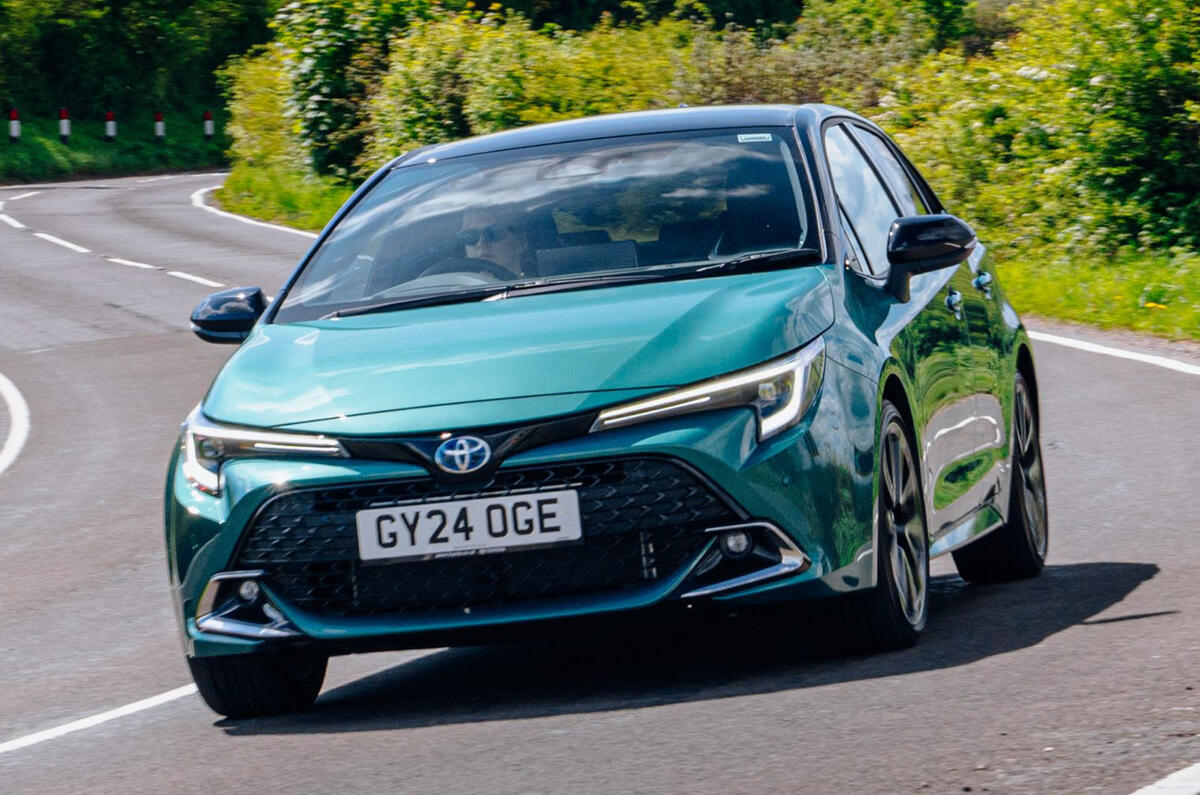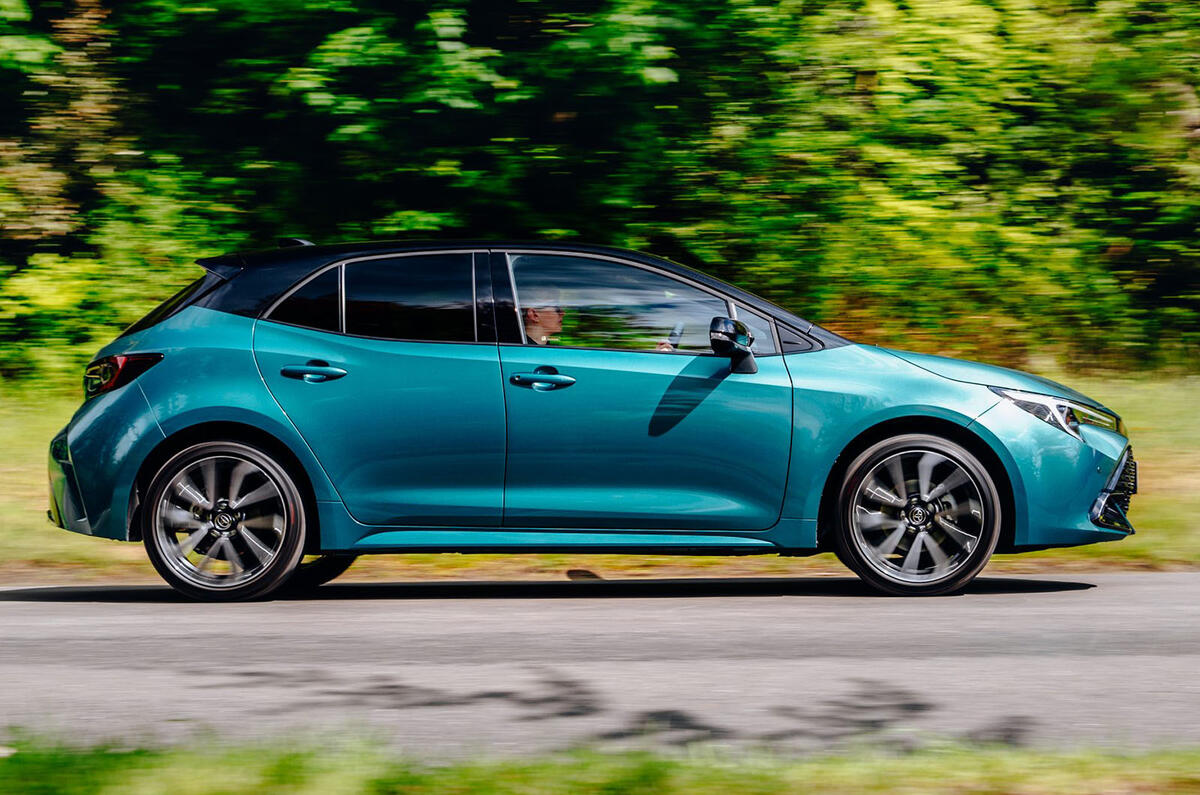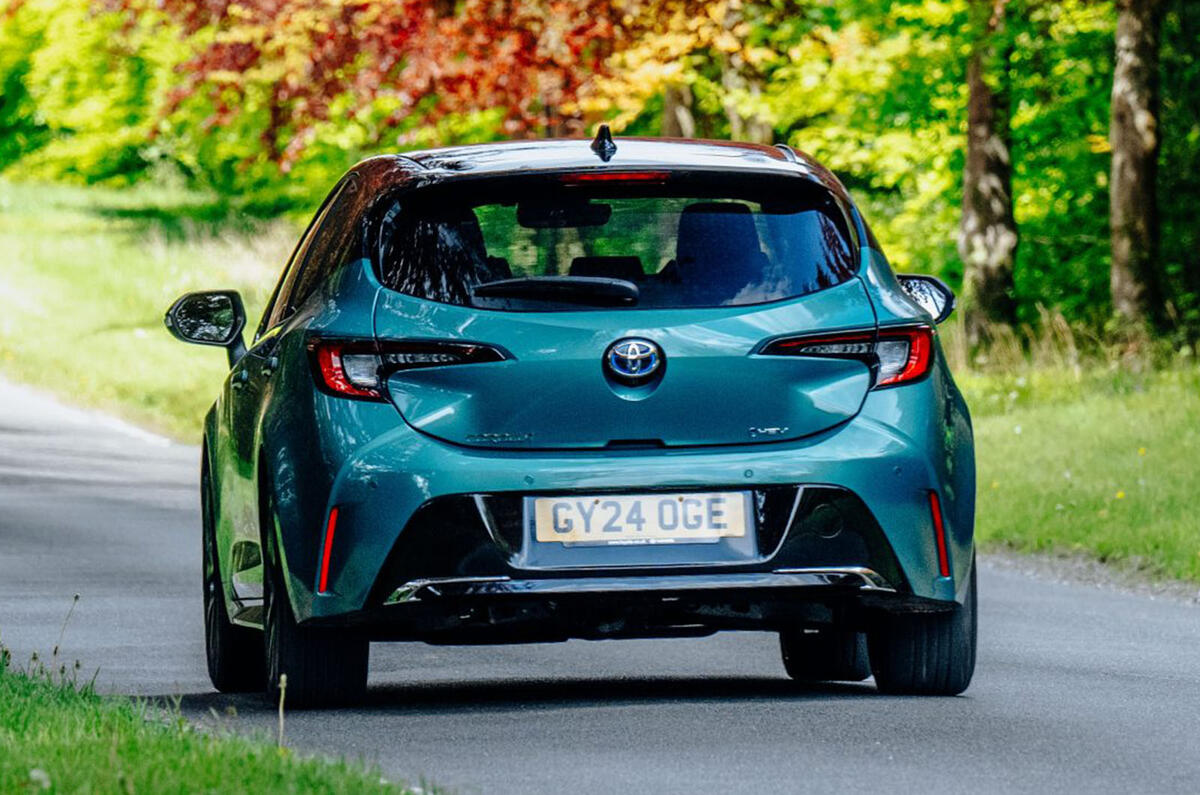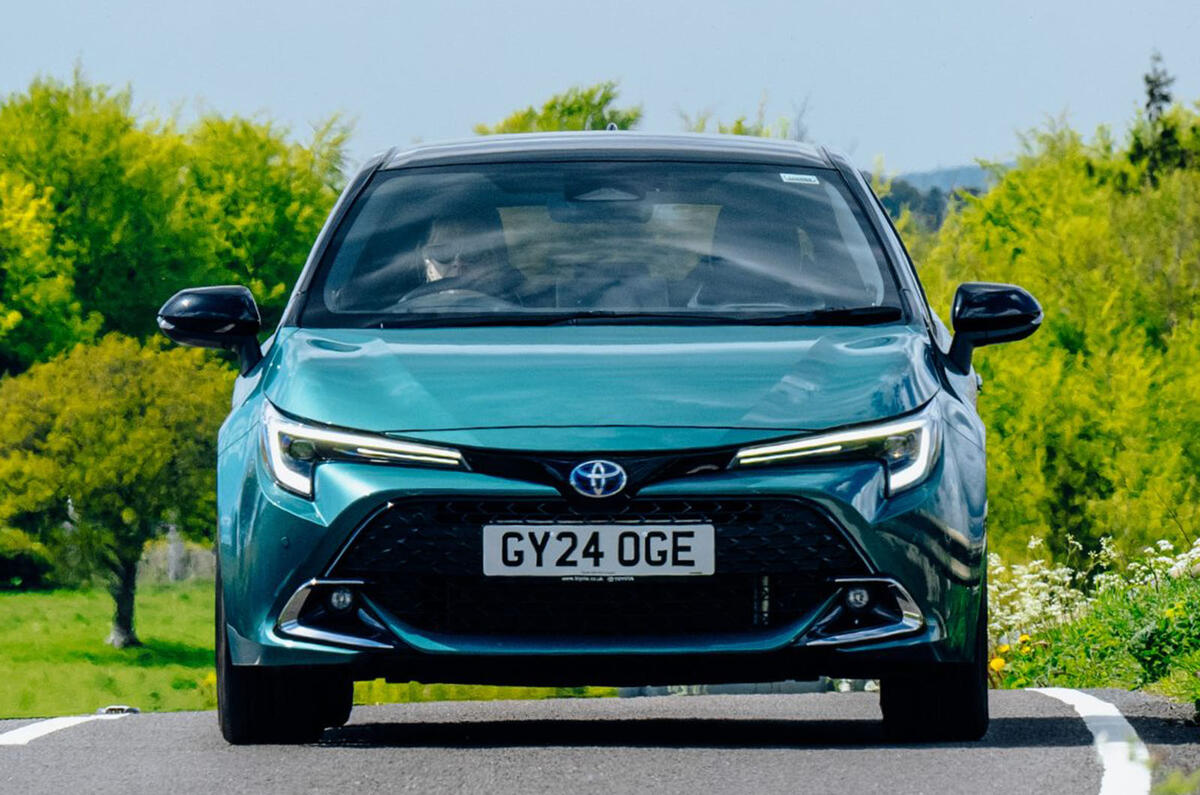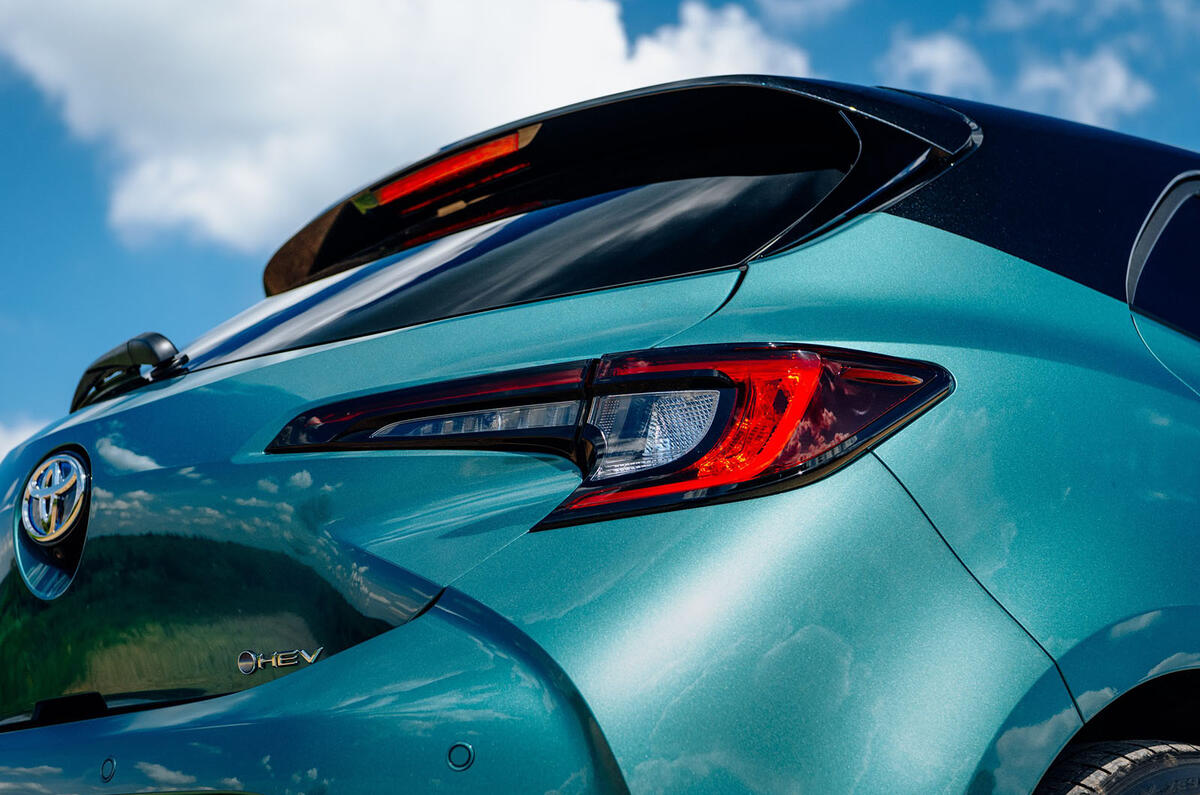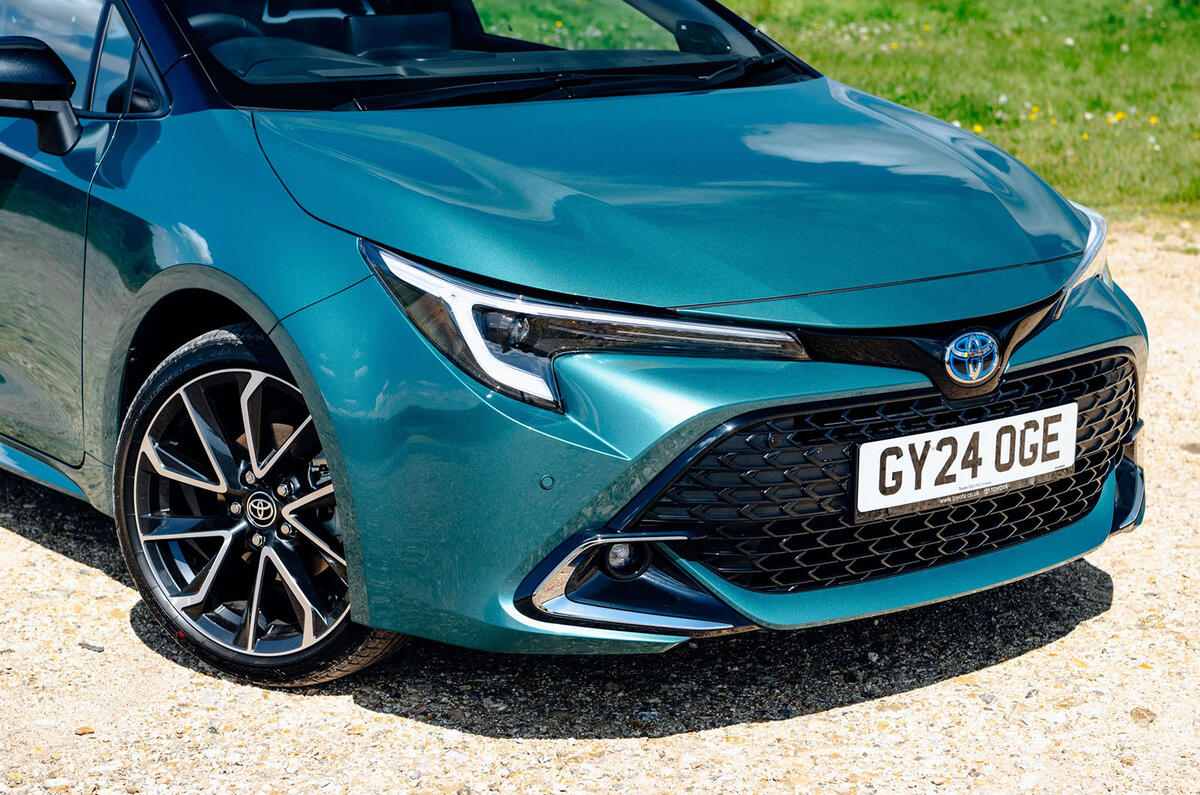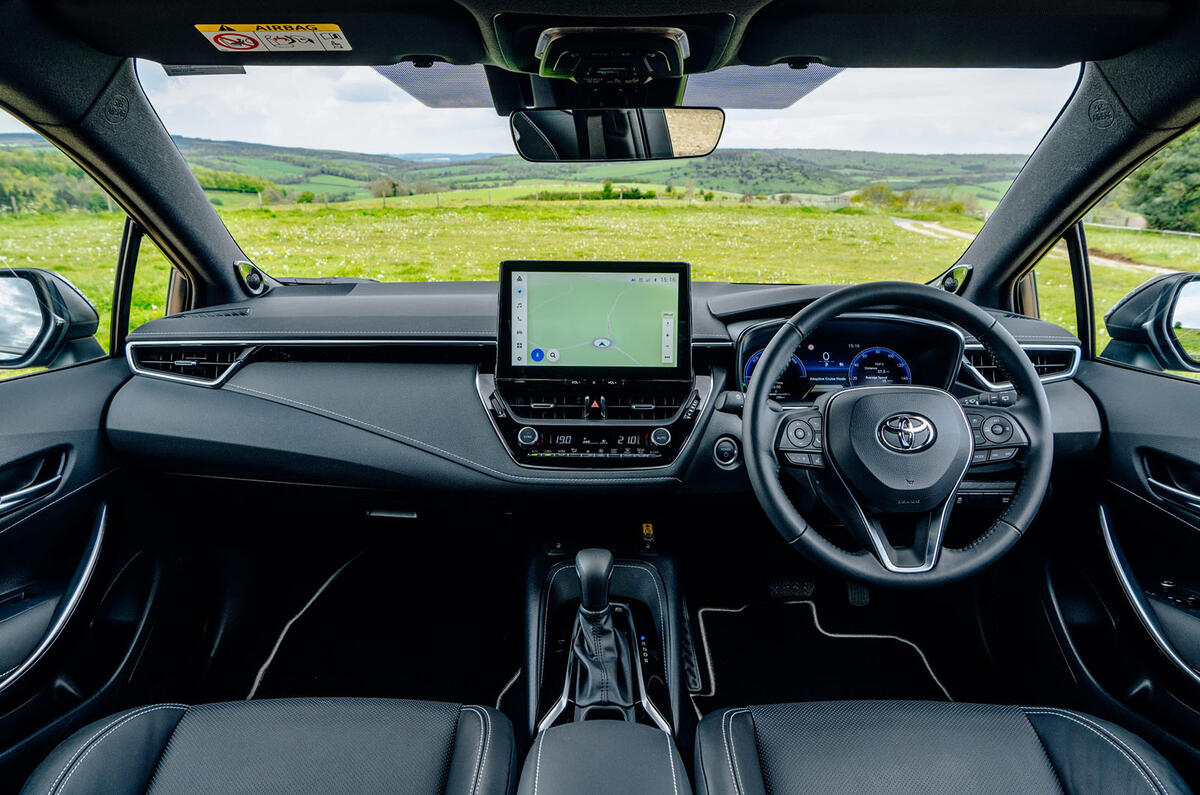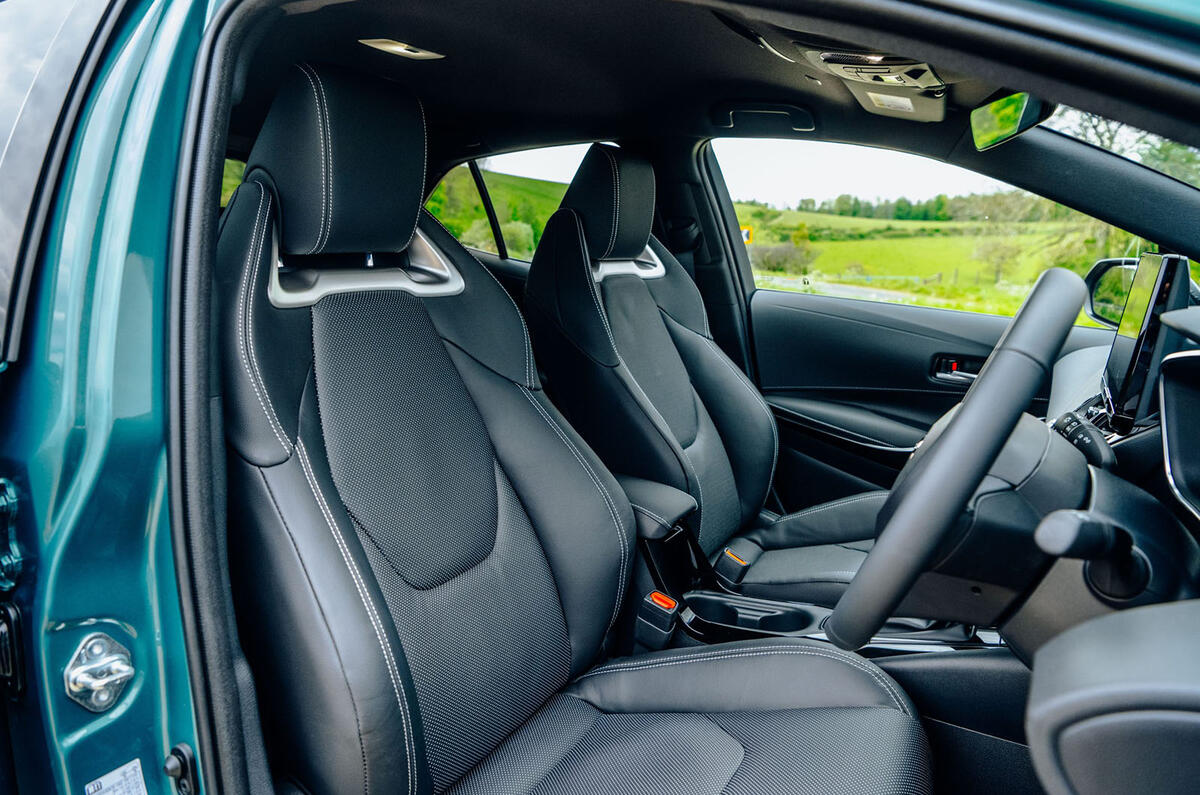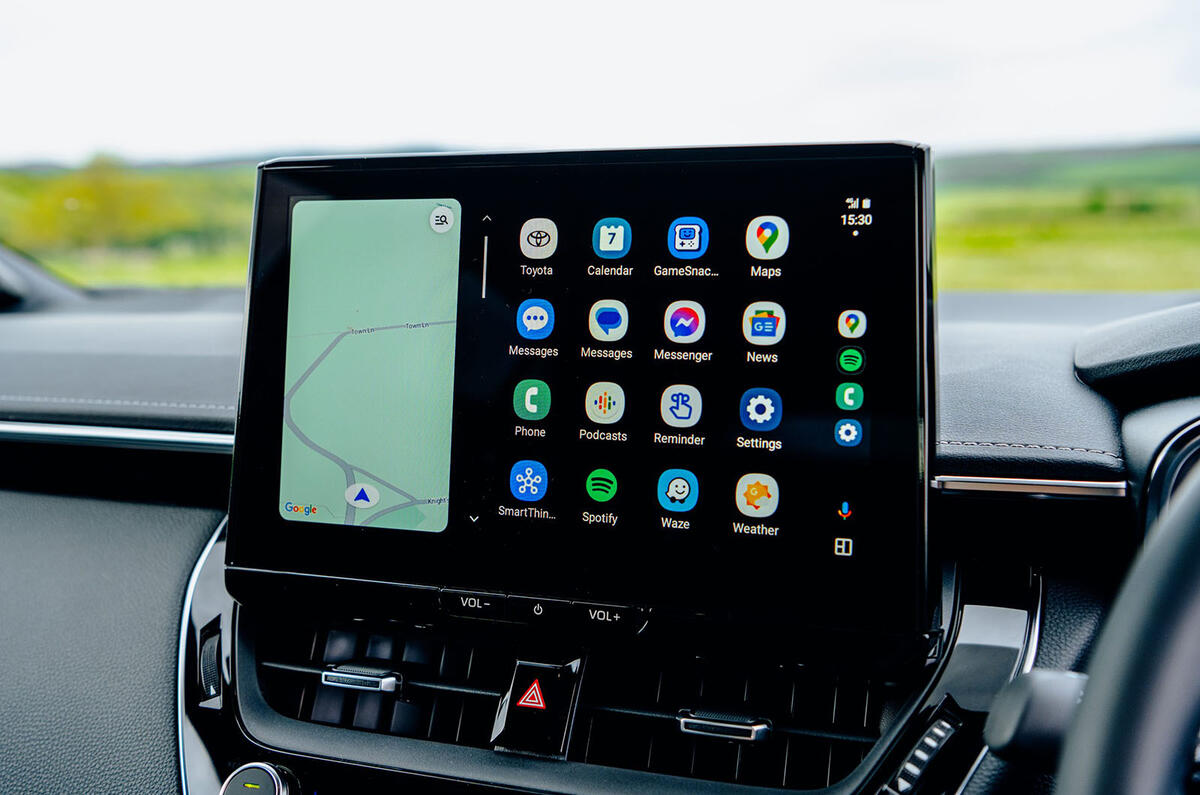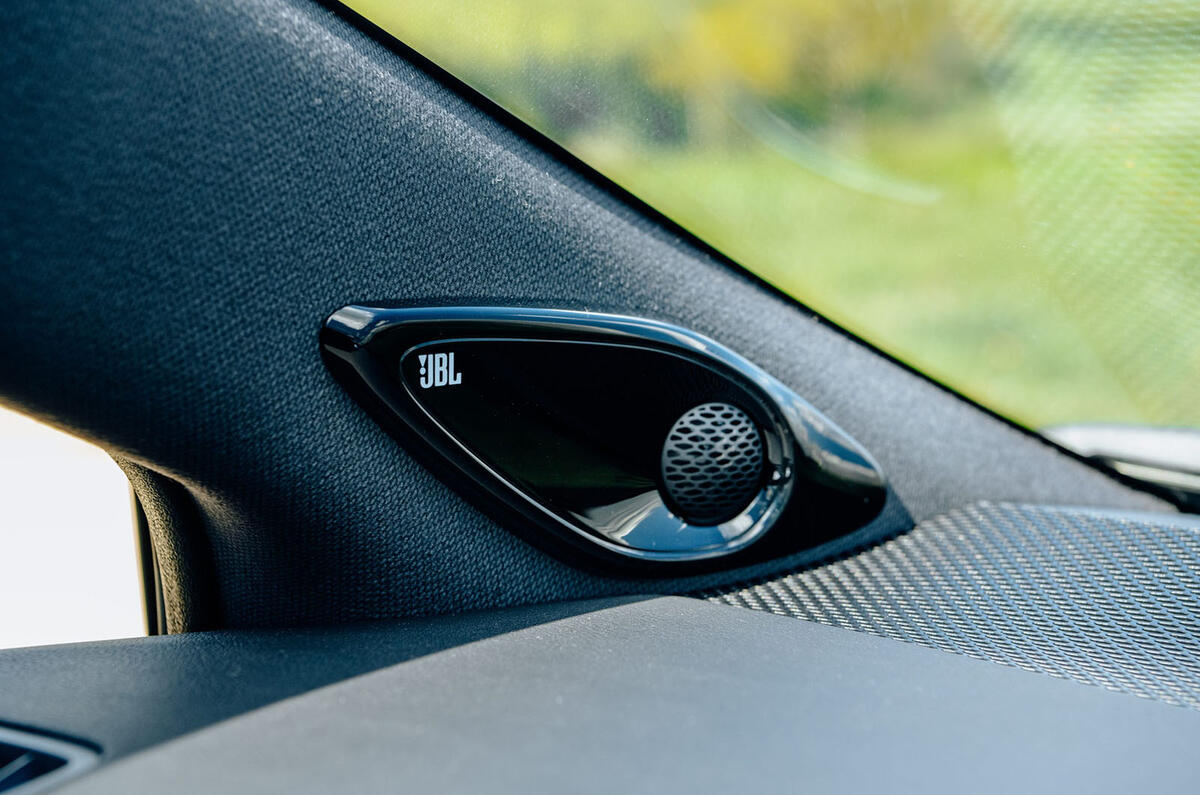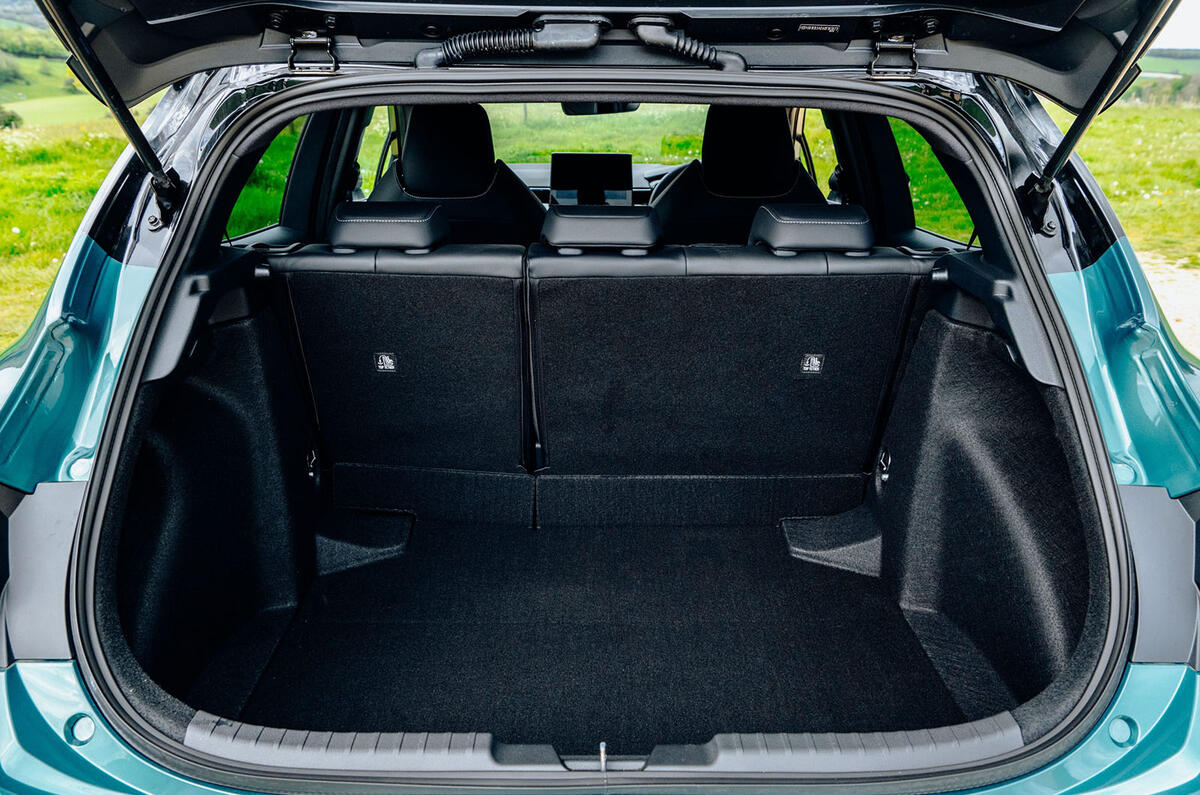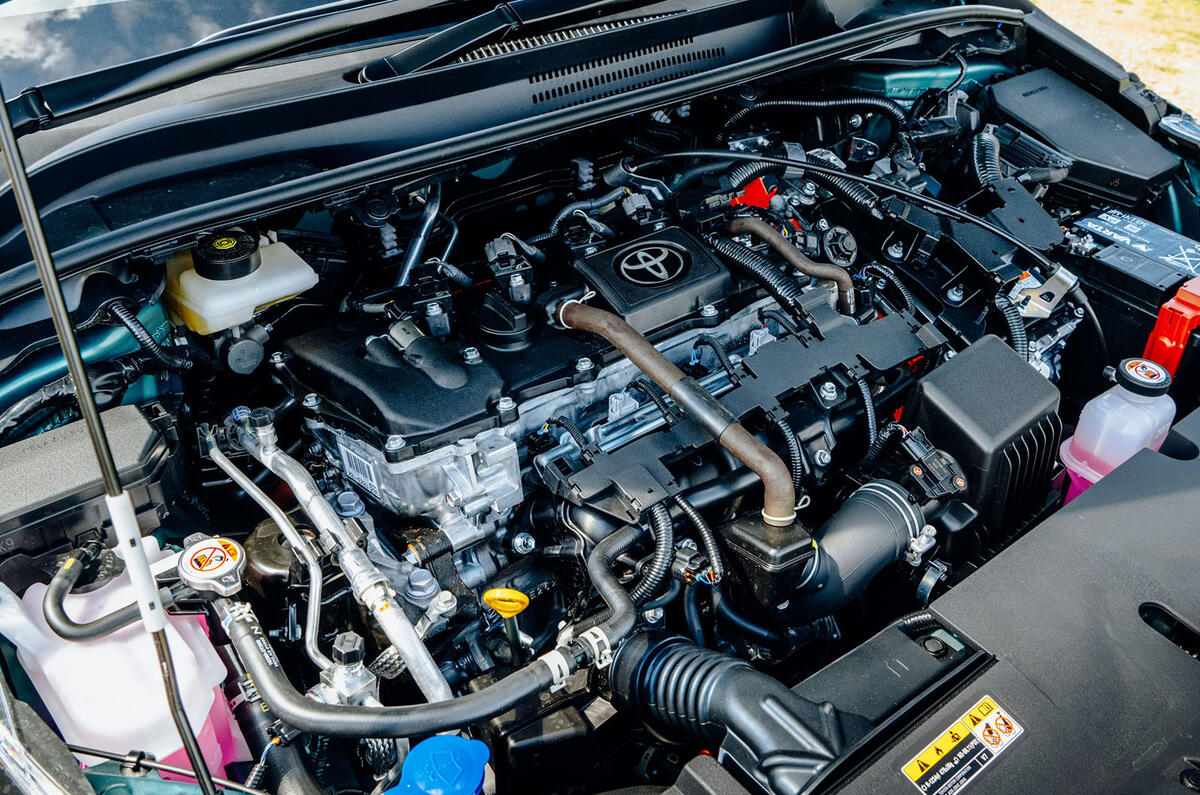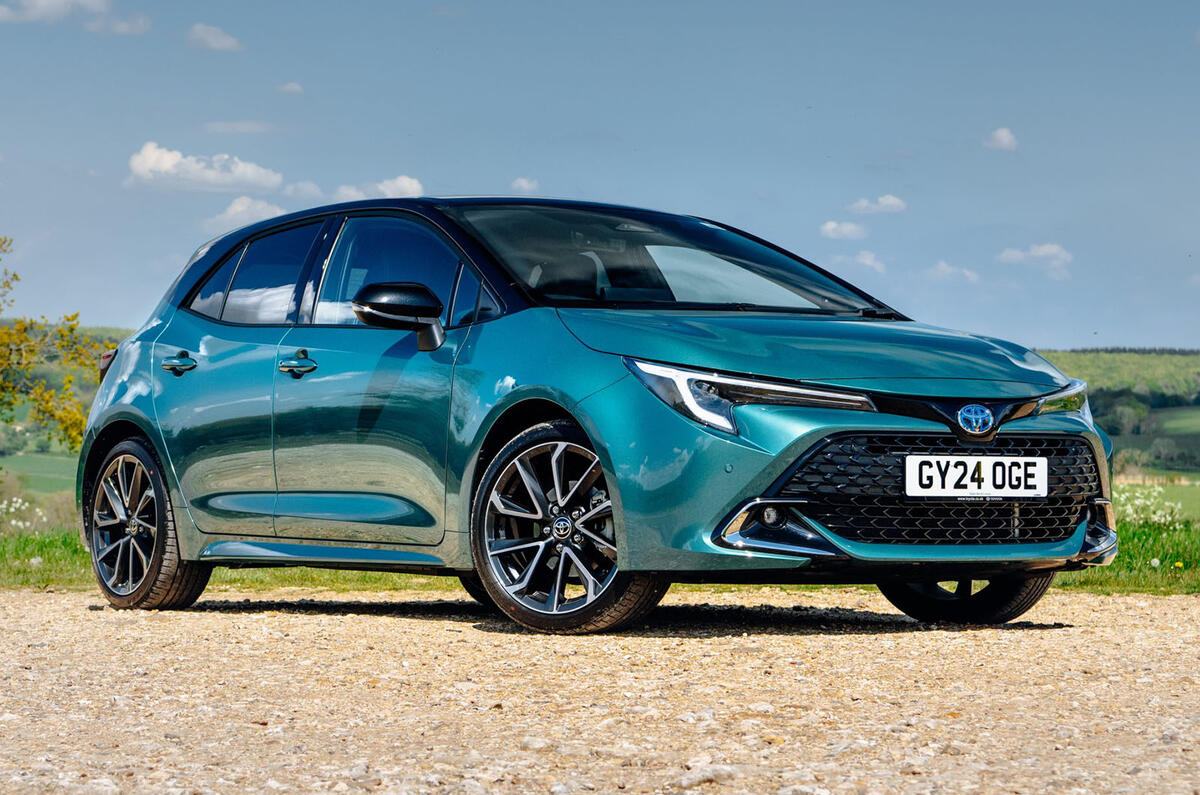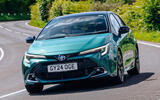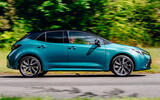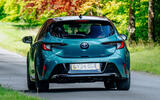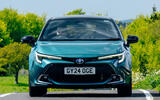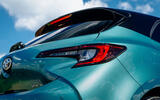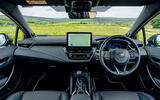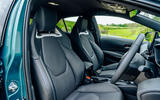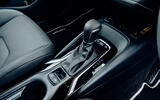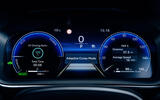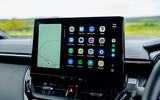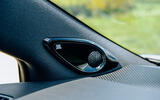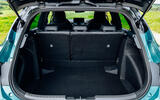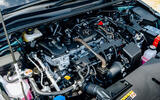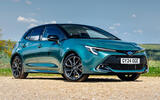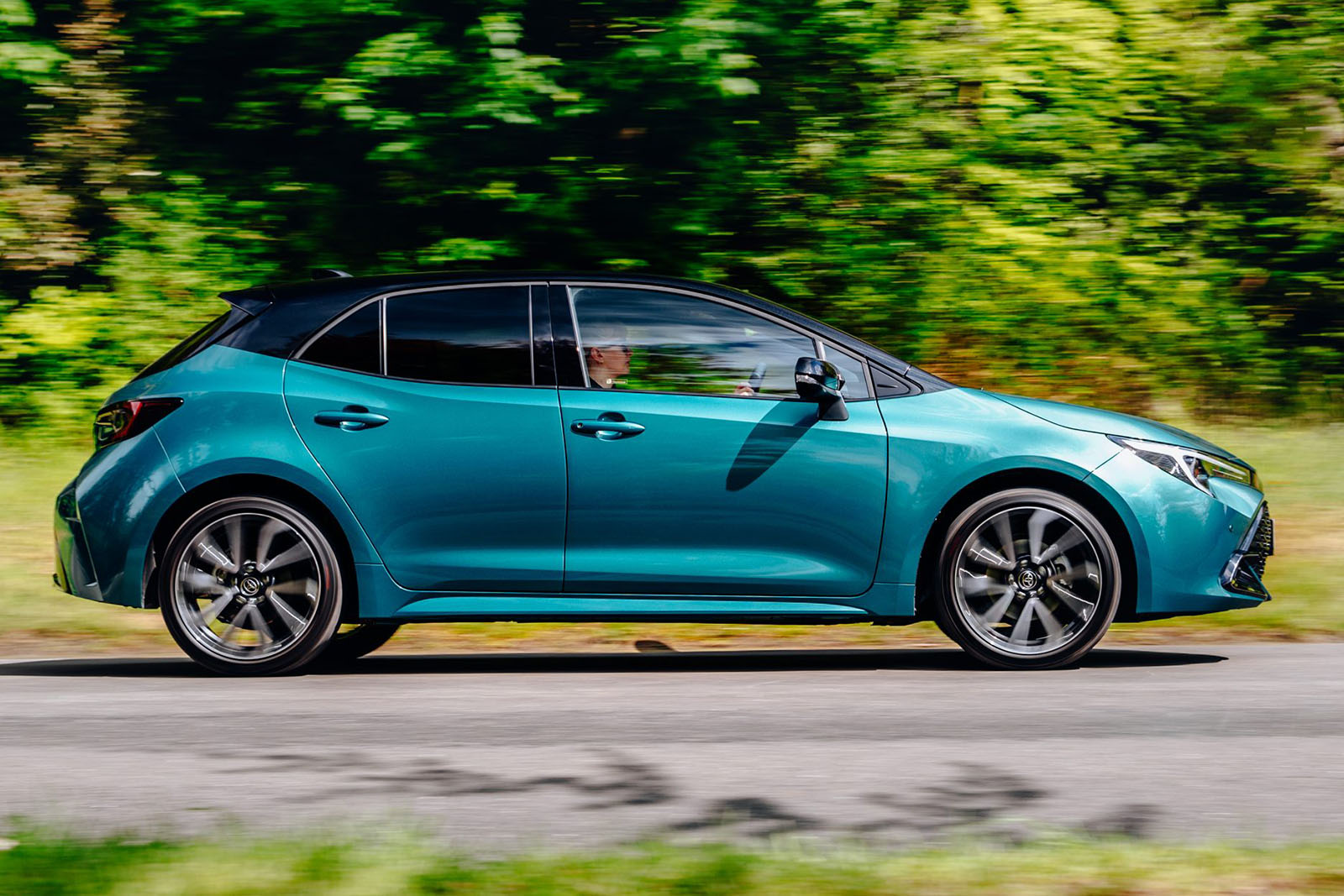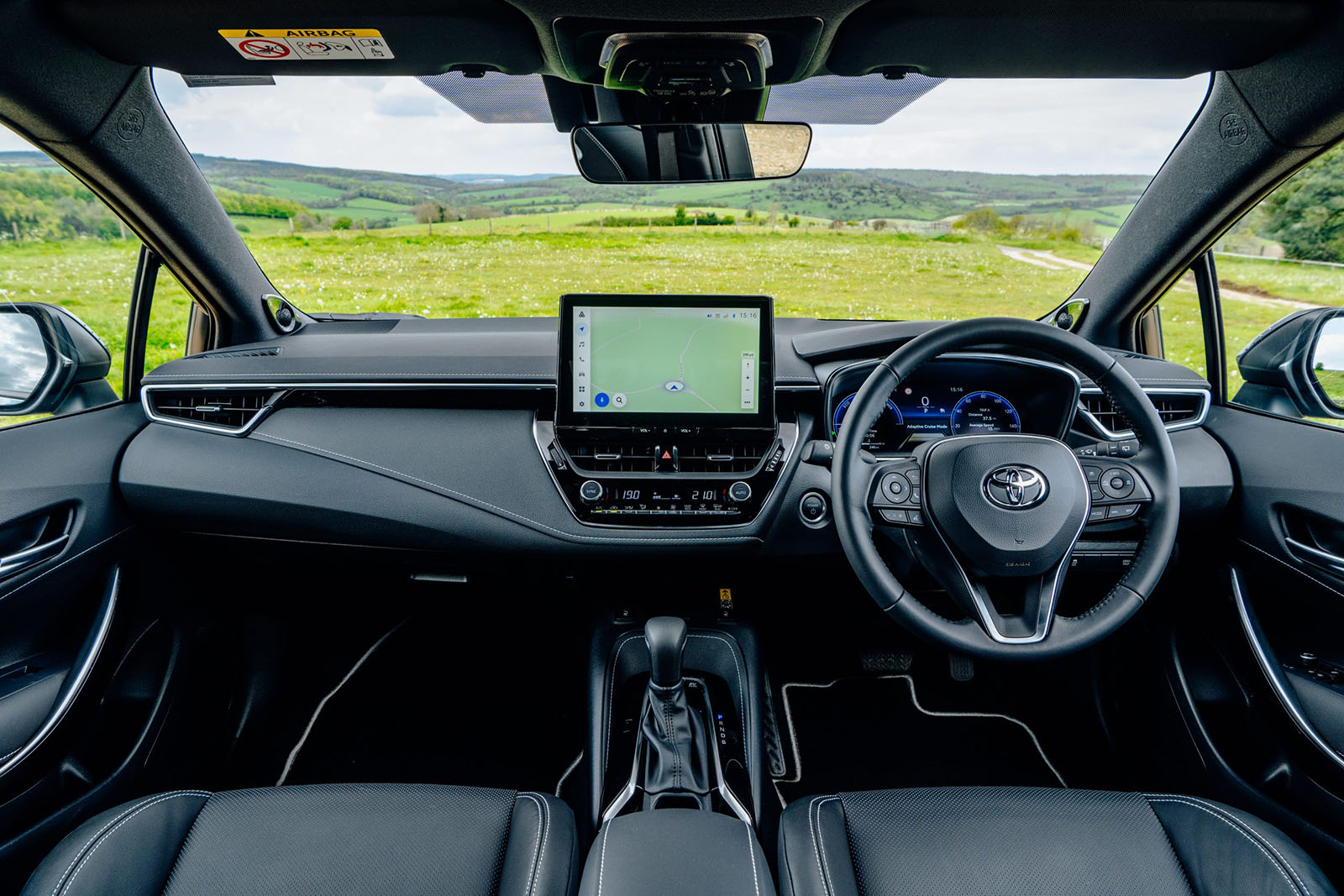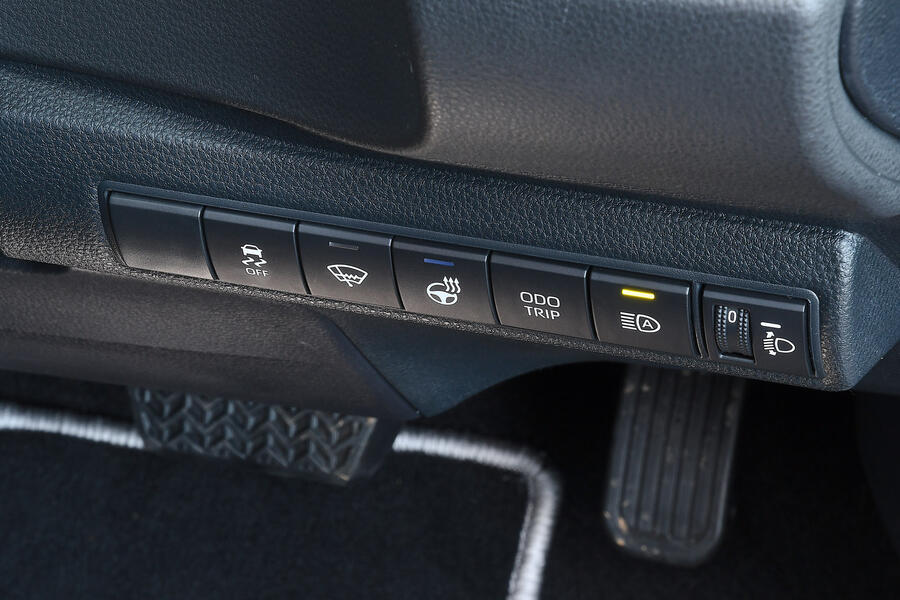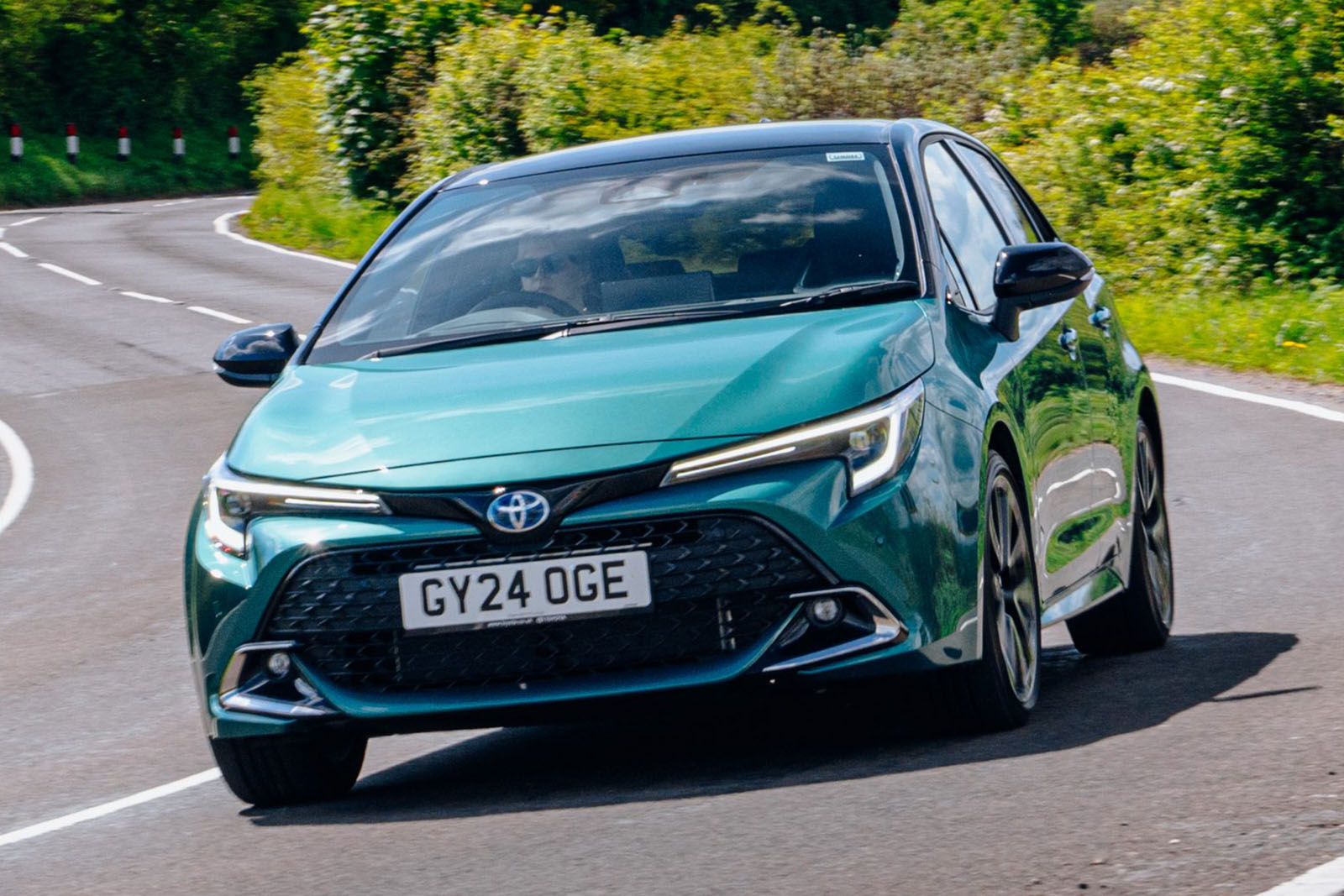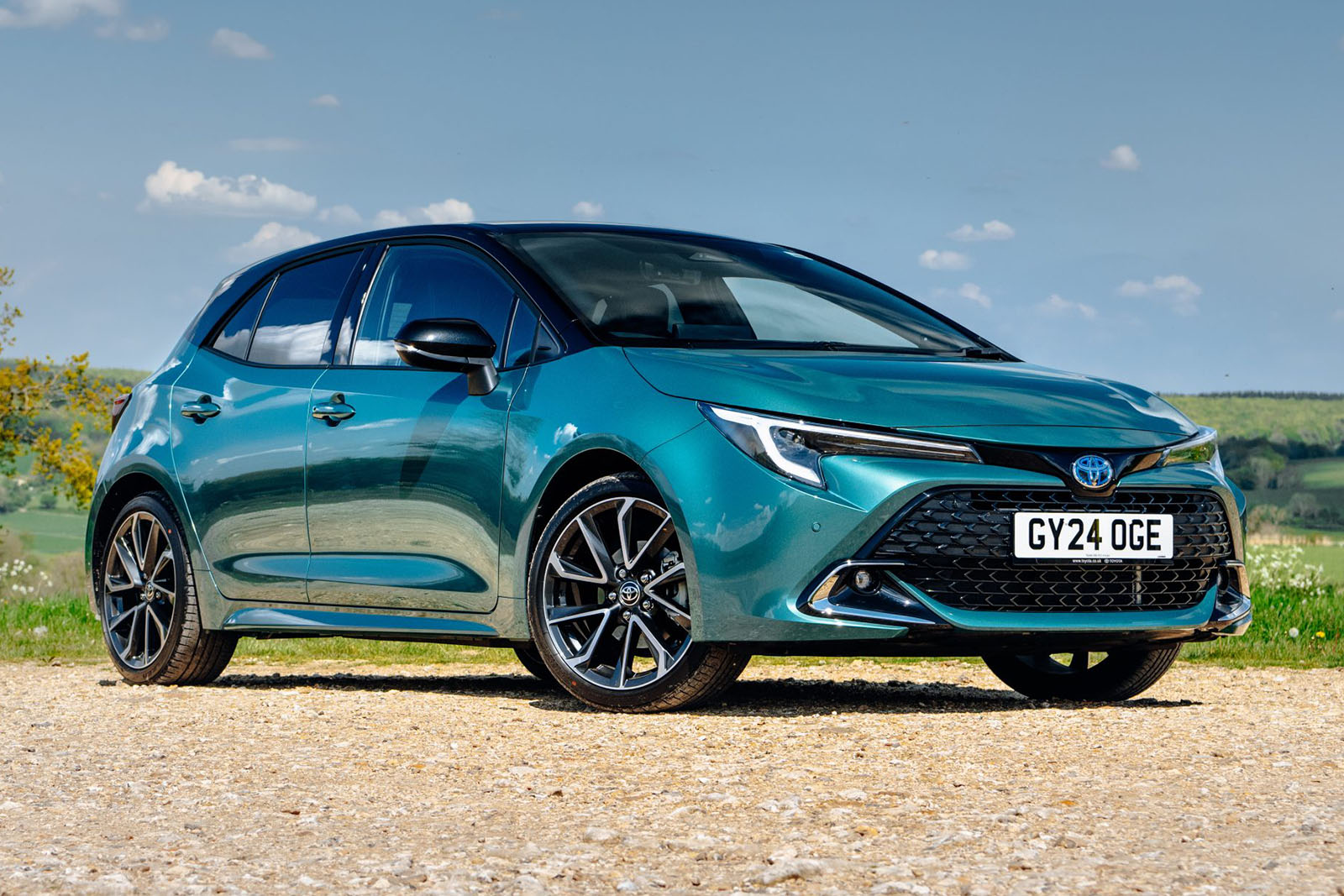What does the word ‘quality’ mean to you? When talking about the interior of a BMW or Range Rover, it’s often taken to refer to how subjectively ‘nice’ the materials feel. If that is your priority, the Corolla is not the car for you. However, if you take it to refer to the longevity of the components, that’s a different story.
Obviously, we can’t test how a car will hold up over 10 years, but the Corolla feels like you could set off a grenade in its interior and the grenade would come off worse. There is no frivolity to be found among the expanses of black rubberised 'elephant skin' and plastic, but it sure feels built to last.
Most of it is extremely easy to use too. There are obvious knobs and buttons for the climate control, chunky switches for functions like the traction control and handbrake, and a pair of military-grade rocker switches for the heated seats. They’re not pretty, but on a cold morning, you’ll be very thankful you can just jab the switch rather than wait for a screen to boot up.
For 2025, Toyota made some changes to the interior. For the £34,545 top-rung Excel trim – which we're testing here – leather has been replaced with a new synthetic alternative; this covers the seats, steering wheel and gear knob. It's barely noticeable from the leather that was used before while still looking good and feeling nice to the touch. This adds a sense of slight premiumness to the Corolla, but not to the levels Volkswagen offers in the Golf.
While the Corolla’s interior is pleasantly old-school in its approach to switchgear, it is somewhat unpleasantly old-school in its versatility. The door bins are quite small, and the cupholders are espresso-sized as well. There’s a tray in front of the gearlever. On higher trims, it’s a wireless phone charger, but on lower trims, it’s just hard plastic and stuff tends to slide out of it.
Overall, the Corolla is not the roomiest hatchback you can buy. Compared with the Seat Leon, the 1.8’s boot is slightly smaller (361 litres versus 380) and the 2.0's boot even smaller still, at 313 litres. It’s in the rear where the Corolla is pretty cramped: by our measurements, the Leon has 10cm more leg room, as well as a decent chunk more head room. The estate is more comfortable in the rear thanks to its longer wheelbase and straighter roof line, but most of its estate rivals will be roomier still.
The estate's boot offers a flat loading area with no lip to negotiate, but it isn’t quite class leading for outright practicality. This doesn't mean, however, that it's not roomy enough for most people's requirements.
The back seats are split 40/60, which will likely please owners in left-hand-drive markets than in the UK, because of the greater through-loading flexibility it grants them – and this may take the sheen off the car’s versatility showing for some. It doesn’t prevent the Corolla Estate’s practical, comfortable and pleasant interior from scoring plenty of credit generally, though.
Infotainment system
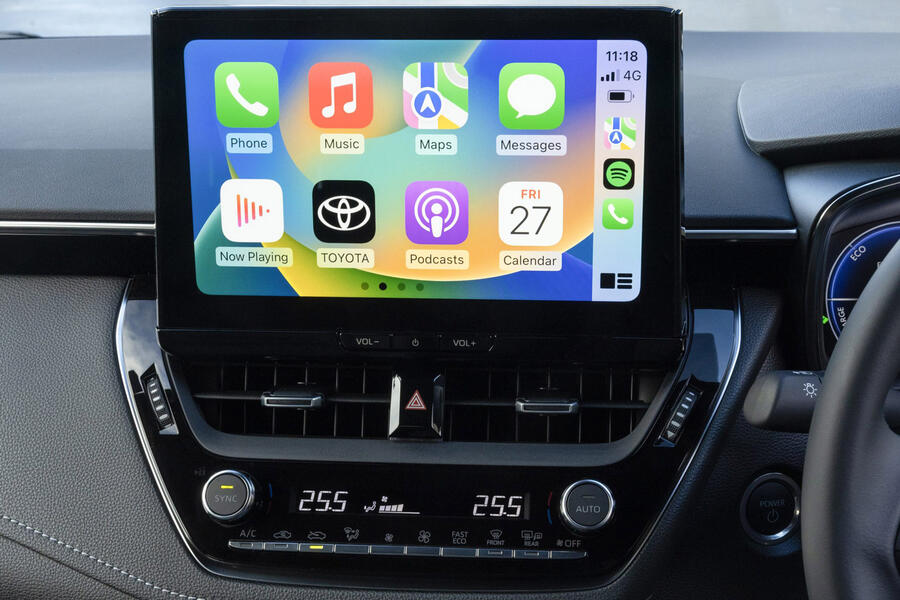
Infotainment has long been Toyota’s Achilles' heel. It muddled along with a painfully dated system for a long time, only to replace it with an interface that takes a few steps forwards, but a few steps back as well.
From 2025, all trims get a 10.5in touchscreen powered by Toyota's own Smart Connect+ system.
In short, the screen is not great and is the biggest let down of the Corolla's cabin. Response time is slow, the menu is faffy to navigate, and compared to rivals like Kia the technology feels a generation behind.
Moreover, there’s no home screen combining media and navigation and it loses its physical controls apart from the volume.
While it is compatible with Android Auto (wired) and Apple Car Play (wireless), the screen’s shortcut bar disappears when those applications are in use, which means you need to navigate additional menus to access the screen’s settings.
The Corolla also gets a 12.3in digital instrument cluster. It has never been the prettiest, most configurable or clearest interface on the market, but for the most part, it has always been largely inoffensive. It has a modern and clear interface that allows for more personalisation than the system that went before it.





